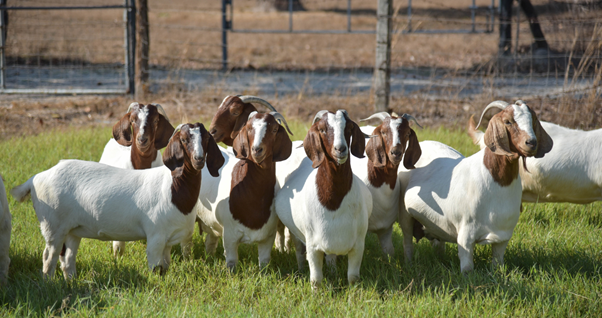
Breeding for worm resistance in goats
Key points
If you’ve decided to get serious about breeding worm-resistant goats, here are some top tips to guide the process.
- Genetic selection can be used to increase the resistance of goats to worms.
- Choose a stud that provides Estimated Breeding Values (EBVs) for worm egg counts.
- Ensure that selection for worm resistance is balanced with other performance traits.
- Choose the appropriate Worm Egg Count (WEC) EBV age.
Do you find yourself needing to drench too often? Are some of your goats more susceptible to worms than others? Or perhaps you just need to diversify the methods you use for worm control and become less reliant on drenching?
Breeding for worm resistance is a component of an integrated approach to managing worms. The most effective worm control programs integrate multiple techniques, as opposed to relying on just one (such as drenching) to combat worms.
Commercial goat producers increasingly prefer goats that better resist parasites. If you’ve decided to get serious about breeding worm-resistant goats, it’s as easy as 1, 2, 3.
But before we do a deep dive into the steps, let’s get a basic understanding of two of the most important concepts that form the basis of our efforts when breeding for worm resistance.
- Worm Egg Count:
A worm egg count is the number of worm eggs in a sample of sheep or goat dung and is an indicator of the type and size of the worm burden present in the host.
- Estimated Breeding Values:
EBVs are an estimate of an animal’s genetic merit rather than its visual merit. The effects of factors such as birth type, dam age, nutrition and management are removed to reveal an animal’s genetic breeding value – what can be passed onto its progeny.
So, where do you start?
Genetic selection can be used to increase the resistance of goats to worms.
The best way to increase the genetic resistance of your herd to worms is to use bucks with better than average worm resistance, which simply means; using bucks with more negative EBVs for WEC in KIDPLAN.
KIDPLAN is a benchmarking system delivered by Sheep Genetics, the national genetic analysis service for the goat industry. Buck breeders who are members of KIDPLAN have WEC EBVs available for their goats if they are measuring WEC for their herd.
Now that you are aware that using bucks with more negative EBVs for WEC in KIDPLAN increases the genetic resistance of your herd to worms, the next big question is, how do you select a buck for worm resistance?
Goats that are resistant to worms can prevent some or all worms from establishing and as a result, have lower worm burdens and therefore lower worm egg counts.
Follow this three-step process and you should be all set to go.
1. Choose a stud that provides EBVs for worm egg counts
Worm egg count is a direct measure indicating worm resistance. When choosing bucks for worm resistance, goat breeders should use Worm Egg Count Estimated Breeding Values (WEC EBVs). WEC EBVs represent the percentage difference in WEC an animal is expected to have, based on its genes.
A WEC EBV is a far more accurate measure than just using a raw WEC figure alone, as EBVs take account of:
- the worm resistance of the animal’s relatives
- the age, sex, and other management factors of the animal
- the heritability of worm egg counts and correlations with other traits.
The more negative the WEC EBV, the more worm resistance you are getting.
If the stud you’ve used for years doesn’t offer WEC EBVs, ask them to start. There are plenty of studs that have started to offer this data because their existing clients made the request. Your request might be the extra one they need to make the change.
2. Ensure that selection for worm resistance is balanced with other performance traits
Worm resistance is invisible, so a good-looking buck with poor worm resistance can be tempting. It’s important you make up your mind as to what’s important to your program before you start looking.
- Select better than average WEC by choosing the more negative values.
- At the same time, select better than average EBVs for performance traits (carcase, live weight, fertility) that are important to you.
Worm resistance is just part of a balanced selection strategy. If a stud meets your other performance and visual criteria, check the WEC EBVs in their sale catalogue. If about one-third to one-half of the bucks have WEC EBV better than your threshold, then a suitable selection of buck is likely to be available to meet all your needs.
Note: When extra traits are included in a selection program, the progress that can be made with each individual trait will decrease slightly, however progress with your breeding objective can still be high.
3. Choose the appropriate WEC EBV age
Choose the WEC EBV age that matches the time of year when worms are most active on your property. That is, decide if it's at the weaning stage (WWEC), post-weaning stage (PWEC), or yearling stage (YWEC).
WWEC estimates the genetic difference in worm burden at 100 days of age.
Post Weaning: PWEC estimates the genetic difference in worm burden at 225 days of age.
Yearling: YWEC estimates the genetic difference in worm burden at 360 days of age.
Source: KIDPLAN EBV Definitions



